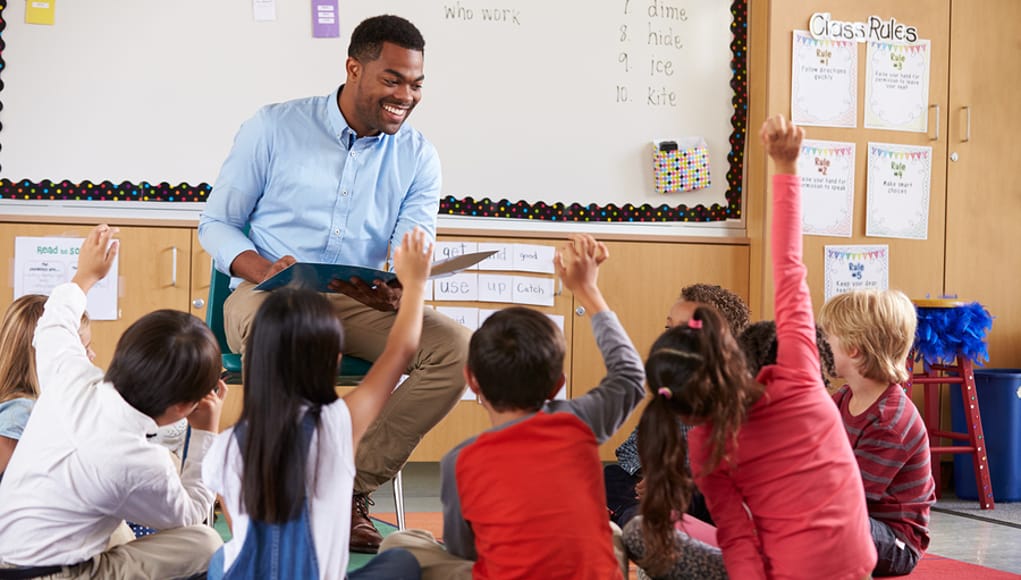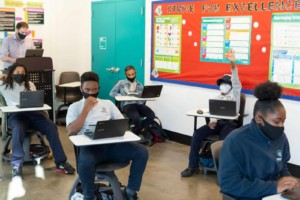What Families Need to Know About Critical Race Theory in Schools

By: Krista Galleberg
You’ve probably heard the term “anti-racism” or “critical race theory” but you might not know exactly what these terms mean. Or, more importantly, you might be confused about how these practices might impact your child’s education. You are your child’s first and most important teacher in life. So what is all this anti-racism hype about and why are so many people starting to talk about it?
Anti-racism and anti-bias teaching (also called many different names such as ABAR, critical race theory or CRT) are practices that make sure everyone is treated fairly in school. It means that students are celebrated and respected as individuals, and they get extra help when and if they need it. In an anti-racist classroom, you probably will hear the teacher and students talking about fairness and unfairness – and talking about these themes often! Sometimes these conversations will focus on events within the classroom, like who is allowed to use a prized classroom toy. Or, fairness conversations might be about global issues like who has access to clean water. In an anti-racist and anti-bias classroom, teachers use age-appropriate language and examples to talk about the big ideas of fairness, justice, and equality in order to help children learn the words and skills they need to stand up for themselves and others.
Anti-racist and anti-bias education is supported by decades of research on how people learn. But as you probably know, there has been lots of debate and concern about what anti-racism and anti-bias teaching looks like in schools. So why is there so much controversy around anti-racist and anti-bias education, if it’s supposed to make everyone feel safe and included at school? Because anti-racist and anti-bias education is difficult to implement, and even more difficult to implement well. Anti-racist teaching requires lots of re-thinking of the traditional classroom, and as teacher Breanna Reynold wrote, it takes a village to rethink traditional learning of the past. Big changes often require big risks, and often times these risks morph into misconceptions.
Since strong anti-racist and anti-bias teaching isn’t the norm in every classroom, many misconceptions about this approach to teaching still abound. Below we’ve listed some of the more popular misconceptions that families might have about anti-racism in the classroom, as well as how our team of educators thinks about these ideas.
The first misconception is aimed at learners.
My child is too young to talk about race and other loaded topics.
Although there are certain details that are not appropriate for young children to hear or see, students of all ages come to school with their own ideas of misconception and race and other big topics. Study after study shows that students need time and support to revise their thinking in order to learn to think critically. By creating time and support in the classroom to discuss big ideas with our students in age-appropriate ways, students are able to revise their thinking about race and identity. In fact, it’s part of our job as educators to help students prepare for independent life. That requires us to give students space and time to practice revising their ideas and ways of thinking about the world – even about controversial topics like race, gender, and other topics.
That brings us to the second popular misconception about anti-racism: anti-bias teaching.
I cannot trust my child’s teacher to talk about these topics in an age-appropriate way.
Understandably, some families feel uncertain about the idea of teachers talking openly and explicitly about social or political topics with children. That being said, anti-racist and anti-bias education is not a free-for-all. In a strong anti-bias, anti-racist program, teachers use their professional discretion and knowledge about child development to choose learning activities that help children explore big ideas of justice and equality without feeling overwhelmed, confused, scared, or guilty.
Sometimes, a teacher’s view on what is age-appropriate will not match a family’s view on what is age-appropriate. When this happens, the family has every right to be upset and to advocate for their child’s needs. In a strong anti-racist/anti-bias learning program, there are open communication channels for families to talk with teachers and school administrators about what their child is learning and what their child needs. In fact, part of teachers’ anti-racist, anti-bias training is how to repair harm and rebuild relationships when a family or a child is upset, and to ensure that all children’s needs are met in the process.
The third and final misconception has been particularly strong recently in the media.
Anti-racist and anti-bias teaching is political propaganda, not education. Anti-racist teachers indoctrinate and students must conform, or else.
Many parents and families worry that anti-racist/anti-bias education means that students won’t learn to think independently, or that teachers will brainwash students into a particular political position. This is a powerful concern for many families, so much so that some families are campaigning against anti-racist teaching in schools across the country. The fear that students will only learn to conform relates to other worries about the quality of learning and teaching that happens in schools. Will students learn to be independent thinkers? Will they be ready to be the leaders of the future?
As educators, we don’t have any perfect answers. It is certainly our intention to help our students become strong independent thinkers and leaders. In fact, more and more of our professional developments and training are about teaching for deeper learning, not shallow or superficial learning.
We are living in a world where most people will have to work with a diverse team to solve problems – and students need to learn skills and language for making sure everyone is treated fairly and can contribute their ideas. We know that our nation is at a difficult and polarized moment. Educators are working to help all children reach their full potential, and that means that we work with students and families to tailor an education that best suits the child’s and community’s needs. To be sure, a key part of that education is anti-racist, anti-bias teaching practices because these teaching practices are designed to make sure everyone is treated fairly in school.
As classroom teachers, we are here to support your child’s development and success as best we know how. We want to learn from you and hear your ideas to make our school the best place it can be for all students – especially those who have been left out or misunderstood. In a strong anti-bias, anti-racist school, teachers and parents work together to ensure every child’s success and happiness. We have so much to learn from our children, and from one another. As families and teachers, it’s time for us to work together to help our children become the anti-racist citizens and leaders our world needs–their future (and ours) depends on it.
This article is a remix of Breanna Reynold’s 2017 article, “What Parents Need to Know About Project-Based Learning” published on Getting Smart. Breanna Reynold has no affiliation with this piece.
For more, see:
- A District’s Grappling With Anti-Racism: The Kearney School District Story
- 4 Ways to Develop Anti-Racism
Krista Galleberg is a classroom teacher at High Tech Elementary Chula Vista. Follow her on Twitter: @kristagalleberg
Stay in-the-know with innovations in learning by signing up for the weekly Smart Update.







0 Comments
Leave a Comment
Your email address will not be published. All fields are required.